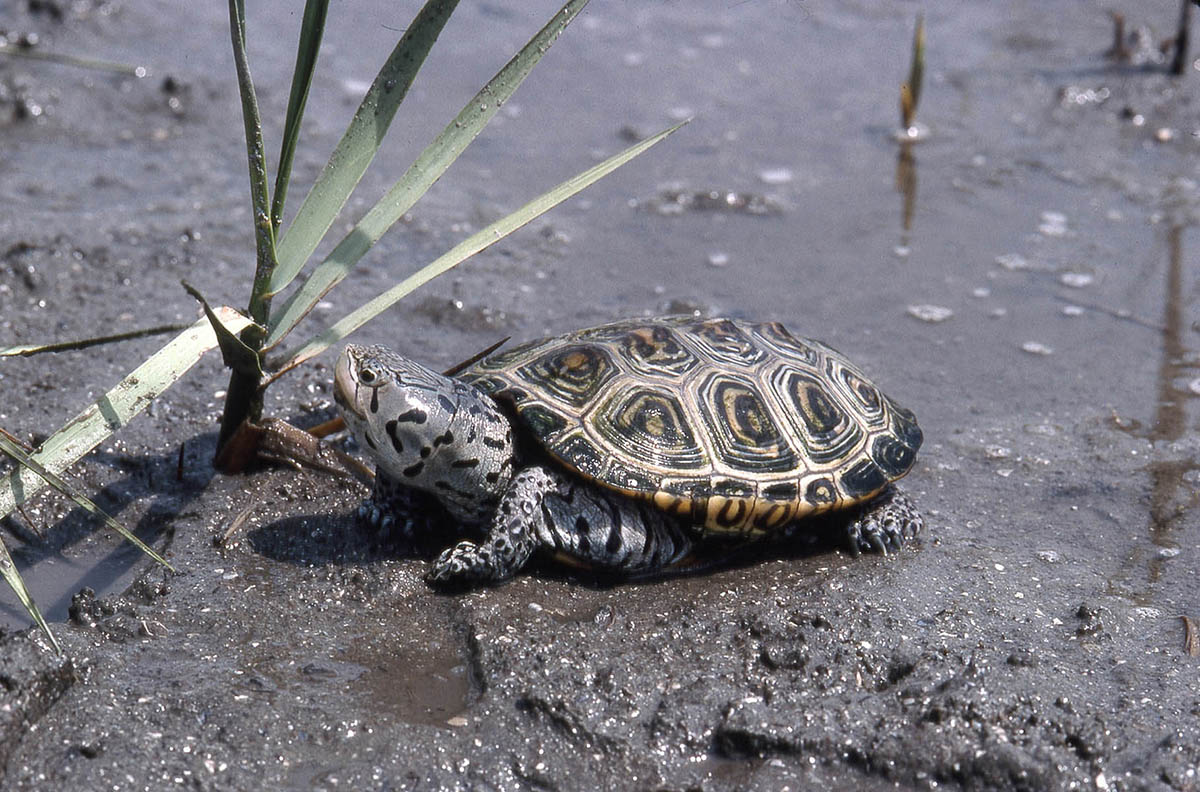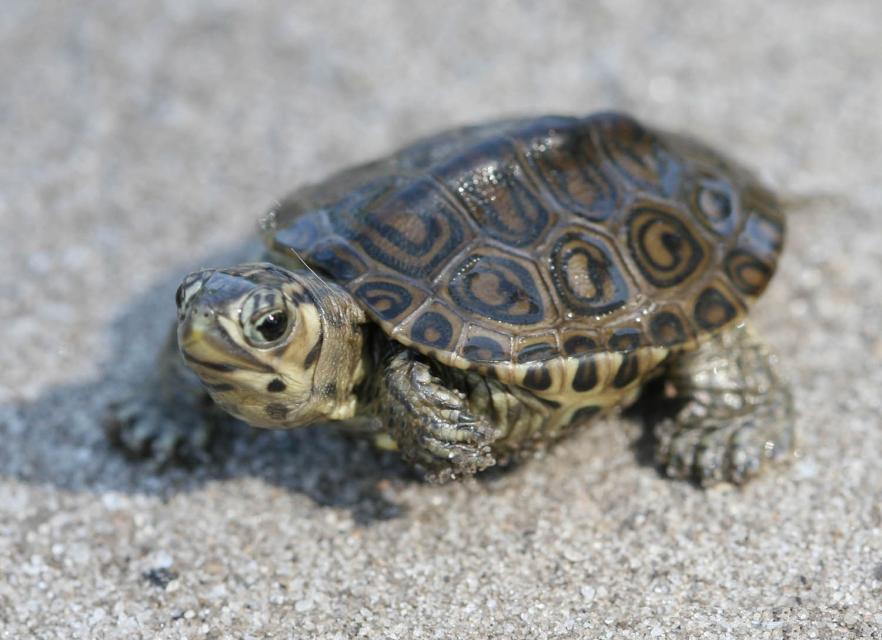
Nearly two dozen organizations have filed a petition seeking federal protection for the only coastal estuarine-dependent turtle species in the world.
Diamondback terrapins, living mostly in coastal marshes from Massachusetts to Texas, have been killed off by the tens of thousands over the past few decades, making it one of the most endangered species on the planet, according to a 130-page petition filed last month with National Oceanic and Atmospheric Administration Fisheries.
Supporter Spotlight
The nonprofit Center for Biological Diversity and 20 other organizations have partnered to petition NOAA Fisheries to list diamondback terrapins as endangered under the Endangered Species Act, a move supported by the International Union for the Conservation of Nature, a global environmental network of scientists, environmental experts, governments and civil organizations.
“We talked with every diamondback terrapin biologist out there, dozens across a 15-state range, from Massachusetts to Louisiana,” said Will Harlan, Southeast director and senior scientist with the Center for Biological Diversity. “It was clear from talking with all the biologists that they are very concerned about this species. We’ve seen 75% declines across most of their range and several complete extirpations of populations in certain places, so they’re declining and not recovering.”
That’s despite efforts to bring attention to the plight of these elusive turtles, identifiable by the diamond-shaped patterns on their shells, in coastal states along the Eastern Seaboard and across the Gulf of Mexico.
While development and rising seas are depleting the diamondback terrapins’ habitat — up to 60% of their coastal marsh habitat is expected to be wiped out by the end of this century — their greatest threat today is the crab pot.
Each year, an estimated 60,000 to 80,000 terrapins drown in crab traps, Harlan said.
Supporter Spotlight
Terrapins are air-breathing reptiles that may climb through a crab pot’s funnel-like entrance to get to bait or simply because they are inquisitive animals. Once inside, a terrapin, like a crab, cannot get out of a trap.
“Their natural curiosity can cause a domino effect, whereby Terrapins may follow each other into the pots, particularly during the breeding season,” according to the petition.
Commercial and recreational crabbers drop an estimated 3 million crab pots each year into inland coastal waters. Each year an estimated 25-50% of all crab traps are lost or abandoned.
There are an estimated 150,000 of these “ghost traps” in Chesapeake Bay alone, Harlan said. An estimated 250,000 derelict traps are left in the Gulf of Mexico each year, he added.
“We’ve got to get the bycatch reduction devices on crab traps,” Harlan said. “That’s priority number one. It’s a very inexpensive and easy solution that won’t affect crab harvests, but will save a very threatened species.”
The Center for Biological Diversity has been working at the grassroots level up to the state level to advocate that crabbers install bycatch reduction devices on their traps.
These little, plastic devices typically cost no more than $1 each. They keep out turtles, reducing terrapin deaths by 94%, according to biologists.

Harlan said there has been some success in getting bycatch reduction device requirements implemented in Florida and “a few other states.”
“But it’s clearly not enough and not the scale needed to save these turtles,” he said.
The North Carolina Division of Marine Fisheries a few years ago created two terrapin management areas – one in the area of the Masonboro Island Reserve and the other around the Zeke’s Island Reserve and Bald Head State Natural Area. Fishers who crab in these designated areas have to use state-approved terrapin bycatch reduction devices on their pots between March 1 and Oct. 31.
Hope Sutton, eastern wildlife diversity supervisor with the state Wildlife Resources Commission, said in an email that there have been “a number of studies” in the state examining different types of bycatch reduction devices and the potential impacts of these devices to crab harvests.
Diamondback terrapins are listed as a species of concern in the state. Terrapins are included as a species of greatest conservation need in the state’s Wildlife Action Plan.
But the lack of a federal listing status makes it difficult for states to take measures to protect both the species and its habitat.
Diamondback terrapins have different status and different rules “across the states that comprise the species’ range,” Sutton continued. “The mix of statuses and protective measures across the states this species occurs in contributes to confusion for fishers as well as making collaboration across state lines more challenging for researchers and resource managers. It also makes communicating with the public about the species more challenging. Federal status could make some of these activities easier by reducing this confusion and allowing collaborative efforts to be simplified and efforts to be more efficient.”
When a species is listed, funding sources are available to cover the costs of developing and implementing conservation programs for that species.
“If the diamondback terrapin became listed, these funding sources could be pursued by individual states or cooperatively by a group of states,” Sutton said.
NOAA is required to issue a preliminary decision within 90 days of the petition filing.
“If it gets a negative finding then that’s the end of the process,” Harlan explained. “But a positive 90-day finding kicks off a 12-month status review. During that one year they will conduct a much deeper dive into the population status of this species. They will fund additional research for assessing the threats and getting stronger population estimates in certain areas.”
After the one-year review, NOAA fisheries will release its final decision on whether to list the species.
If the agency declines to list the diamondback terrapin endangered, Harlan said organizations will continue advocating for state-level enacted bycatch reduction rules.








